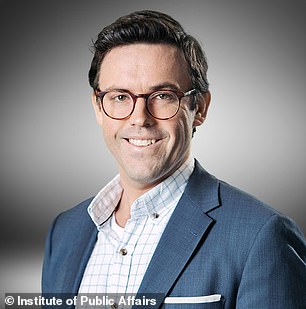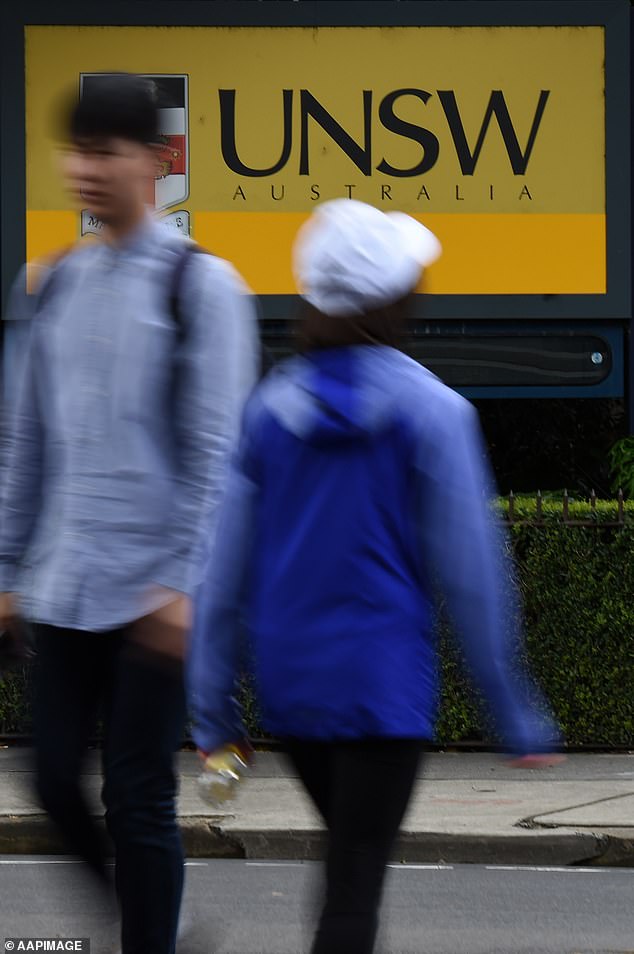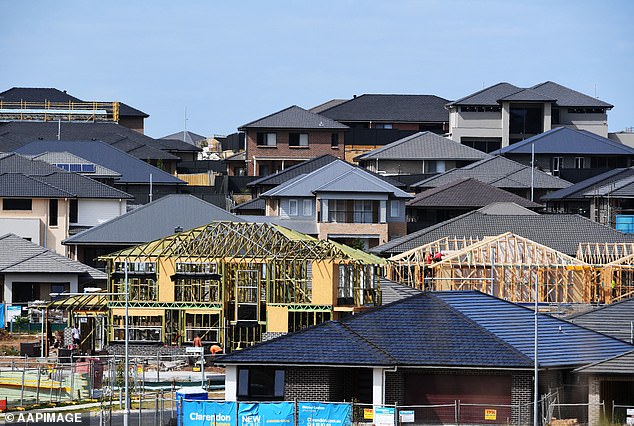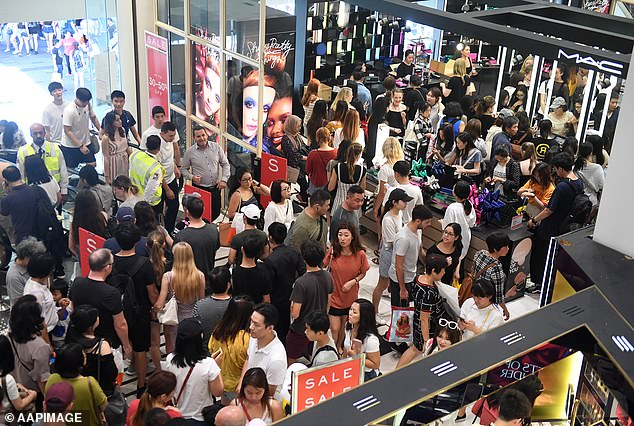Australia has reached a new immigration milestone with the arrival of more than 100,000 foreigners in just one month for the first time.
The historic total is eight times the number of new homes approved and is expected to further fuel the worsening housing crisis.
The net inflow of permanent and long-term arrivals in February was 105,460, almost double January’s level of 55,330, new data from the Australian Bureau of Statistics showed.
This occurred when a large number of international students moved to Australia during the first semester of the university year.
Australia’s capital cities also have rental vacancy rates of less than one per cent, as construction activity fails to keep pace with rising population growth.
Australia has reached a new immigration milestone with the arrival of more than 100,000 foreigners in just one month for the first time (pictured, shoppers at Sydney’s Pitt Street shopping centre).
The 12,520 houses, apartments and government units approved in February accounted for just one-eighth of the net monthly migrant arrivals, and rents in the capital have risen by double-digit percentages over the past year.
Institute of Public Affairs deputy chief executive Daniel Wild said this was a recipe for a housing crisis.

Institute of Public Affairs deputy chief executive Daniel Wild said this was a recipe for a housing crisis.
“The arrival of migrants to Australia remains out of control and promises to ‘normalise’ arrivals are in tatters,” he said.
“Combined with plummeting housing construction approvals, Australia is setting itself up for a disaster.”
Treasury’s Mid-Year Economic and Fiscal Outlook forecasts Australia’s annual net overseas migration figure will moderate to 375,000 in the 2023-24 financial year.
But that is hardly happening, with 498,270 net arrivals in the year to February, encompassing permanent skilled migrants and long-term arrivals such as international students.
A record 548,800 migrants arrived in the year to September, with the foreign influx accounting for 83.2 per cent of Australia’s population increase.
The 2.5 percent population growth rate, including births, was the fastest since 1952.
Wild said high immigration was keeping Australians out of the property market.
“The data shows that the federal government’s unplanned mass migration program is unsustainable,” he said.

The net inflow of permanent and long-term arrivals in February was 105,460, almost double January’s level of 55,330, new data from the Australian Bureau of Statistics showed (pictured, students entering the University of New South Wales).

Australia’s capital cities also have rental vacancy rates of less than one per cent as construction activity fails to keep pace with growing population growth (pictured are houses under construction in Oran Park, south-west Sydney ).
“This is actively undermining Australians struggling to find a home, as rising demand and lack of supply is pricing them out of the market.”
The median home price in Australia’s capital of $956,782, according to data from CoreLogic, is well beyond the reach of the average full-time worker at $98,218.
This is because banks can only lend 5.2 times their salary to someone with a stable job and a 20 per cent mortgage deposit.
The average salary would only be enough to buy a house for $639,000, while in the Sydney metropolitan area it would only buy one unit or a house within 100 kilometers of the city centre.
Tenants are also suffering: 175,960 international students arrived in February, adding to the competition for a place to live.


